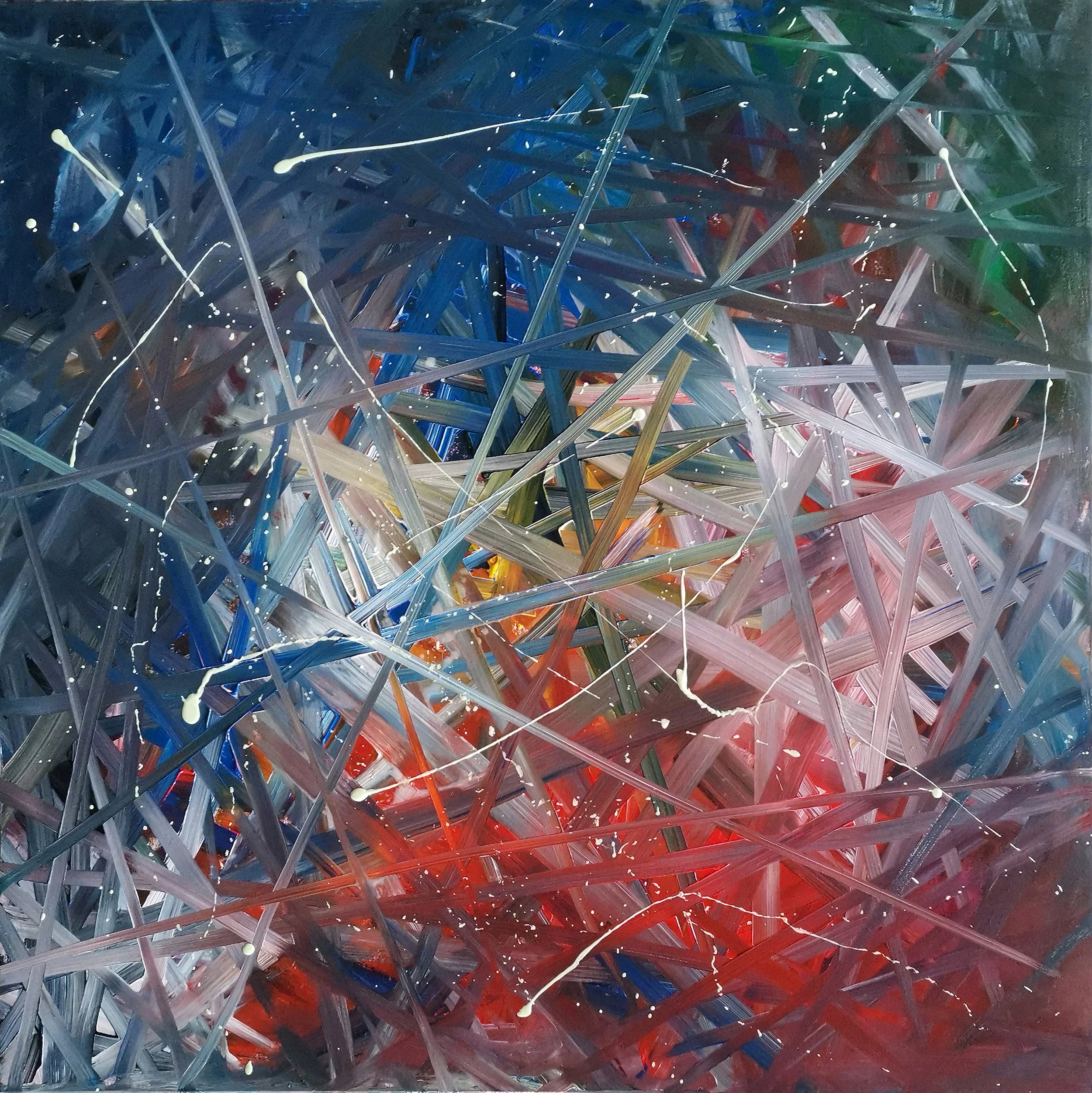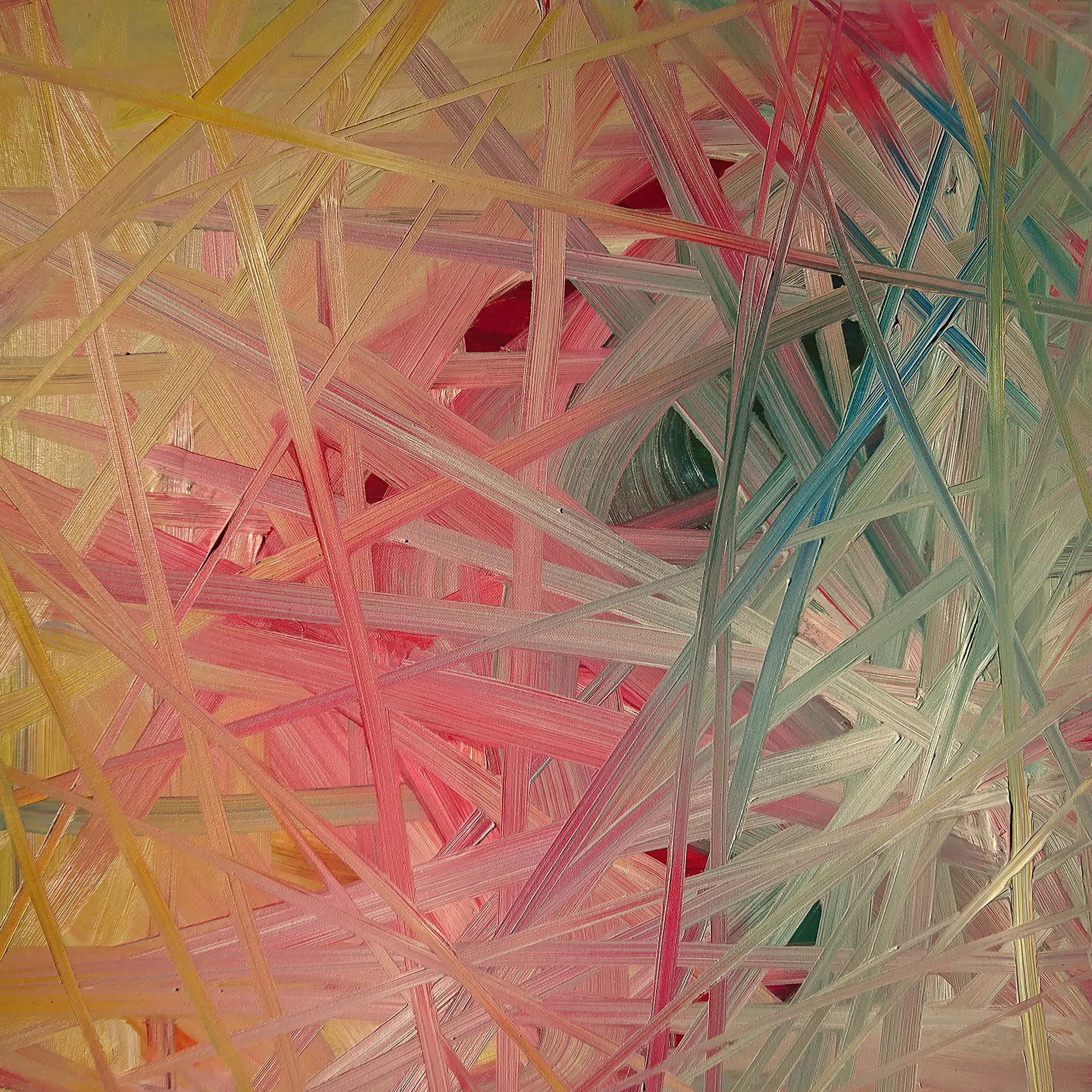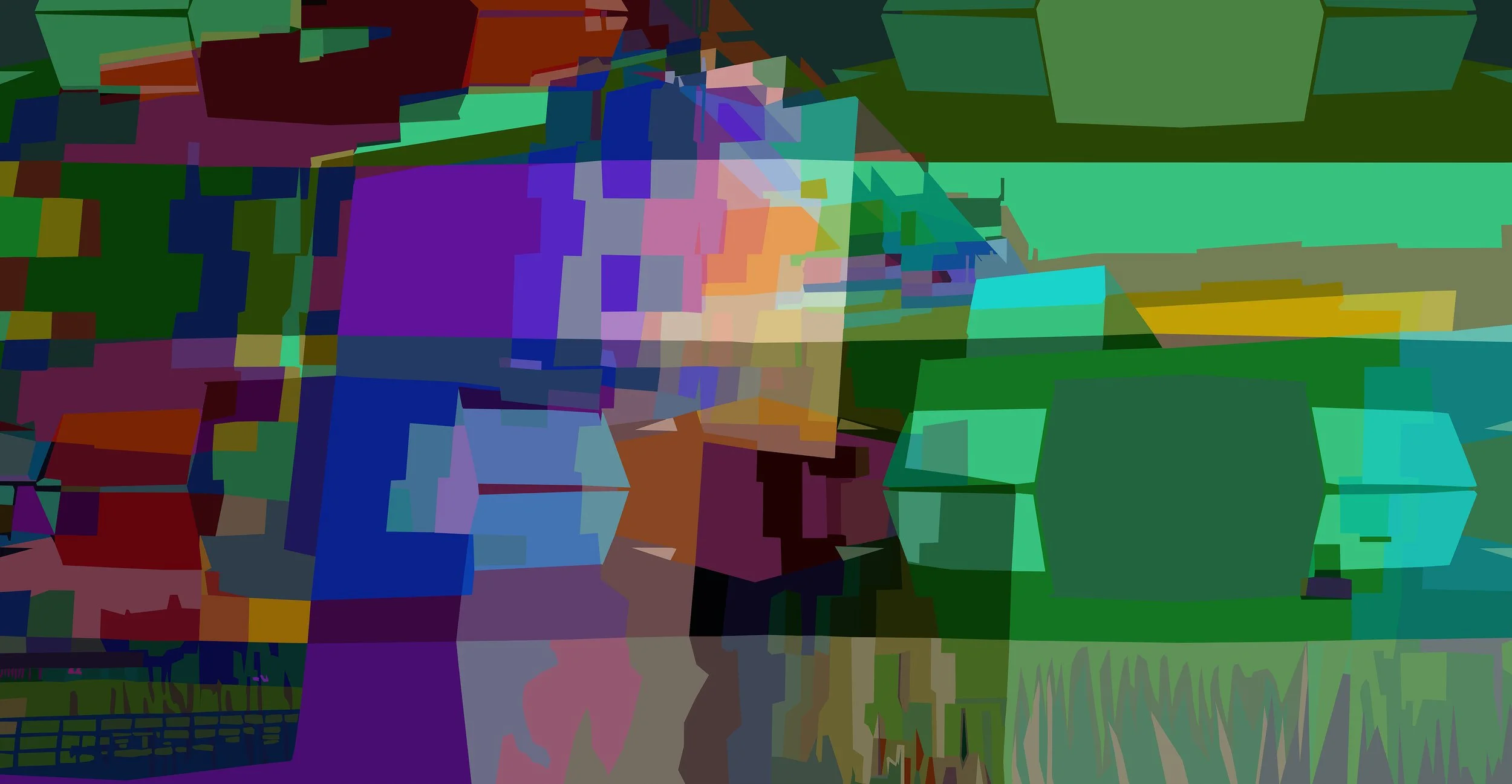Dex Hannon
Dex Hannon’s work does not present itself in grand gestures. Rather, it unfolds gradually through repetition, revision and recontextualisation. Hannon has developed a body of work that challenges conventional notions of completion and authorship. He navigates a space between painting, moving image and digital extraction, where the boundaries between disciplines are intentionally blurred.
At the heart of his practice lies an interest in what remains, fragments, residues, discarded frames, what he calls “points on a journey.” His films are not cinematic in the traditional sense; they are compositional research projects. In works such as 3744p, Hannon dissects his own films frame by frame, selecting individual images not for narrative continuity but for their formal tension. These are then used as the basis for digital manipulations and paintings. Each phase is not a conclusion but a provocation toward the next.
The relationship between film, digitalism and painting is neither hierarchical nor sequential in Hannon’s work. A frame may become a painting, and that painting may become a digital remix, then reanimated and inserted into a new film. This cyclical exchange underscores his interest in material instability and the non-linearity of creative process. There is no original, no final version, only iterations.
Hannon works under several identities. Notably, ‘Skin Vehicles’ functions as a sonic alter ego through which he explores the auditory dimensions of visual experience. This identity is not a pseudonym but a conceptual tool, allowing Hannon to create sound works that interpret, rather than accompany, his paintings and digital compositions. These sonic pieces are not illustrative; they are translations, often composed as scores for his films or as standalone works that interrogate the relationship between sound and image. The name Skin Vehicles suggests not only transformation but the notion of sound as a membrane, a surface that both contains and transmits.
Born in Manchester in 1972 and now based in Northumberland, Hannon’s practice is shaped by a deep engagement with environment, memory and rhythm. Music is not merely an influence but a structural force within his methodology. His paintings, often described as “pictorial symphonies,” are composed with the same attentiveness to modulation and dissonance that one might find in a musical score. This synaesthetic approach recalls the spiritual abstraction of Rothko and the material experimentation of Richter; yet Hannon’s work remains distinct in its refusal to settle into a singular lineage. 'The painting is not the end.'
His ‘Retro-Futurism’ series exemplifies this refusal. Here, paintings are digitally remixed, reinterpreted and recontextualised, not as reproductions but as new works that interrogate the temporality of the image. A painting may become a digital artefact, which in turn may inspire a film or sound piece. The process is recursive, not linear; each work is a node in a larger system of enquiry.
There is a sustained interest in systems, whether visual systems like the grid, algorithmic processes of selection or social systems embedded in how we value and consume art. And yet, Hannon resists systematisation. His work evades categorisation; it is not expressionism, though it bears its residue, not strictly digital, though deeply indebted to the screen. It is, in the best sense of the word, unsettled.
What sets Hannon apart is not the variety of media he employs but the consistency of enquiry across them. He treats each medium as a problem space, a place where the familiar is destabilised and the overlooked becomes central. It is not innovation for its own sake but a form of critical persistence.
In an era where artists are often expected to brand themselves through recognisable visual language, Hannon’s refusal to settle is significant. His work rewards slow engagement and, perhaps more importantly, it resists resolution. That resistance to finality, to singular identity, to the fetish of medium is not a limitation. It is the work.
Dex Hannon is originally from Manchester now based in Blyth, North East England. His art lives in several private collections across the world. He has featured in books and magazines, across the globe.
In 2020, he won best in show for the International Art Folio 2020 Annual award. In 2019 he was shortlisted for the Refresh Art Prize in 2019.
Hannon’s oeuvre examines transformation and reinvention, with each medium providing a distinct perspective on the human experience. His guiding philosophy, “What else could it be?” informs his multidisciplinary approach, continuously challenging boundaries and redefining the possibilities of art.
Music significantly influences Hannon’s creative process, akin to the practices of Mark Rothko and Gerhard Richter. For Hannon, music serves not merely as an inspiration but as a catalyst. Each composition evokes memories and emotions, which are translated into the rhythmic, dynamic elements that characterise his work. His art is frequently described as "pictorial symphonies," adorned with intricate lines, bold textures, and vivid colour palettes.
Beyond traditional media, Hannon has embraced digitalism, particularly through his Retro Futurism series. He approaches each piece with an openness to evolution where a painting might form the basis for a digital reinterpretation, a single photograph might inspire an entire film, and a completed piece often marks the commencement of a new creative endeavour. For Hannon, the artistic process does not have a definitive end; instead, it presents ongoing opportunities for reinvention.
Hannon’s practice is profoundly influenced by his environment and his conviction in art as a unifying force. Through his paintings, films, and collaborations, Hannon continues to investigate the intersections of memory, emotion, and possibility, encouraging audiences to envision not only what is, but what could be.
https://dexhannon.co.uk
https://www.instagram.com/dexhannonartist/
https://www.facebook.com/DexHannon/
The Decline of Empires, 2020. Acrylic on Canvas, 80 x 80cm
Sugar Pop Dream Factory, 2018. Oil on Canvas, 60 x 60cm
RAGE, 2017. Acrylic on Canvas, 76 x 76cm
G-Spot Tornado, 2021. Acrylic on Canvas, 90 x 90cm
Blythian Phase State, 2024. Digitalism, 100 x 50cm
Equanimity, 2022. Digitalism, 80 x 80cm.
We Dance-F297, 2025. Digitalism, 70 x 40cm.
3744-F6045, 2025. Digitalism, 70 x 40cm
Bridget's Blockhouse Blues, 2024. Digitalism, 75 x 30cm.
3744-F84, 2025. Digitalism, 70 x 40cm















